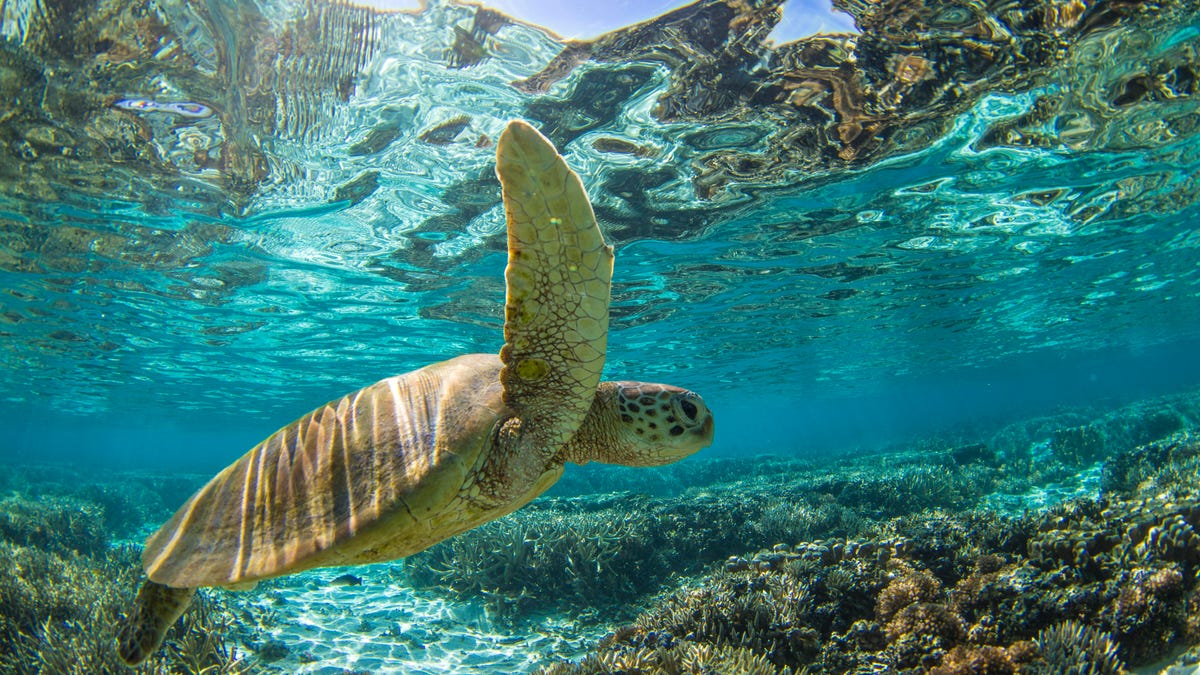Great Barrier Reef gets government life support
Australian funds will go toward stopping polluted water from entering the reef, culling predatory starfish, researching coral and monitoring bleaching.

A sea turtle swims off Australia's coast.
The future isn't looking good for the Great Barrier Reef, with rising water temperatures leading to coral bleaching that has decimated much of the natural wonder. The Australian government announced Monday how it'll help the ailing reef with AU$60 million ($48 million, £34 million) over the next 18 months.
Most of the money, AU$36 million, will be devoted to battling new polluted water entering and toxifying the reef. Meanwhile, crown-of-thorns starfish, a predator of the reef's corals, will be the target of a AU$10.4 million attack, with the number of vessels culling the pest increasing from three to eight.
Of the remaining money, AU$6 million will go to the Australian Institute of Marine Science and CSIRO, who will devise research programs that look into ways to make coral more resilient. And AU$4.9 million will be used to hire field officers who will monitor the reef and give warnings of bleaching events.
The AU$60 million is part of the government's 2015 pledge to spend an estimated AU$2 billion in Great Barrier Reef preservation over a period of 10 years. The government isn't just interested in protecting the reef for sentimental reasons, as the reef supports 64,000 jobs and adds AU$6.4 billion to the economy.
The crux of the reef's problem is warming waters, which prompt coral bleaching. Algae provide coral with nutrients through photosynthesis, but if the algae become heat stressed or overexposed to sunlight, they instead produce a toxin. The coral then expel the algae, causing the coral to bleach. Bleaching, depending on severity, can be fatal.
This problem is compounded significantly by the crown-of-thorn starfish, a sea creature that eats coral -- and whose population has spiked in recent decades. These starfish are a different type of problem to bleaching, as they demolish coral at all times, while bleaching events usually occur every few years.
"I'm not ready to give up on the reef, that's for sure," said Dr. Line Bay, senior research scientist at the Australian Institute of Marine Science, in a phone call with CNET. Bay will work with other scientists from the Institute and CSIRO to devise research into new ways to conserve the reef.
She said the group, currently at what she would call a think tank stage, will kick off a 10-year research and development program. Some of the ideas they work on may take less than 10 years to implement, Bay said, but some even longer.
"In order to give the reef the best chance of the future we need strong CO2 mitigation, we need to continue to implement the conventional management approaches that are currently in use, and we need to consider some of these new interventions as part of our concept feasability study. Doing all of these things, we can give the great barrier reef the best chance for the future," she said.
Originally published: 3:20 p.m. AEST.
Update, 10:32 p.m. AEST: Adds comment from Dr. Line Bay.
Rebooting the Reef: CNET dives deep into how tech can help save Australia's Great Barrier Reef.
Special Reports: All of CNET's most in-depth features in one easy spot.

